Historical images
| What happened this month | Image | Title | Description | Posted |
|---|---|---|---|---|
| This month 54 years ago… | |
January 1961 – Miss Steel and the Scientific Conference Secretariat | Conferences are a great way to promote international scientific communication, and CERN soon acquired considerable experience in running them. In January 1961 it set up a Scientific Conference Secretariat to share this expertise, organizing conferences in collaboration with local scientific institutions abroad as well as those on-site. In the early days the Secretariat had a staff of just one person - Miss Steel. A keen traveller and one of the great characters of CERN, E. W. D. Steel brought experience from an international career in refugee work when she joined the Organization as a secretary in 1955. She soon discovered that conference organizing committees generally had plenty of scientific knowledge, but were less skilled in dealing with the practicalities. She also observed that “most theoretical physicists are delightful people but they are often nervous and highly strung and need to be handled with care”! Her autobiography A ‘One and Only’ Looks Back is filled with anecdotes of a rich and rewarding life. |
|
| This month 60 years ago… | 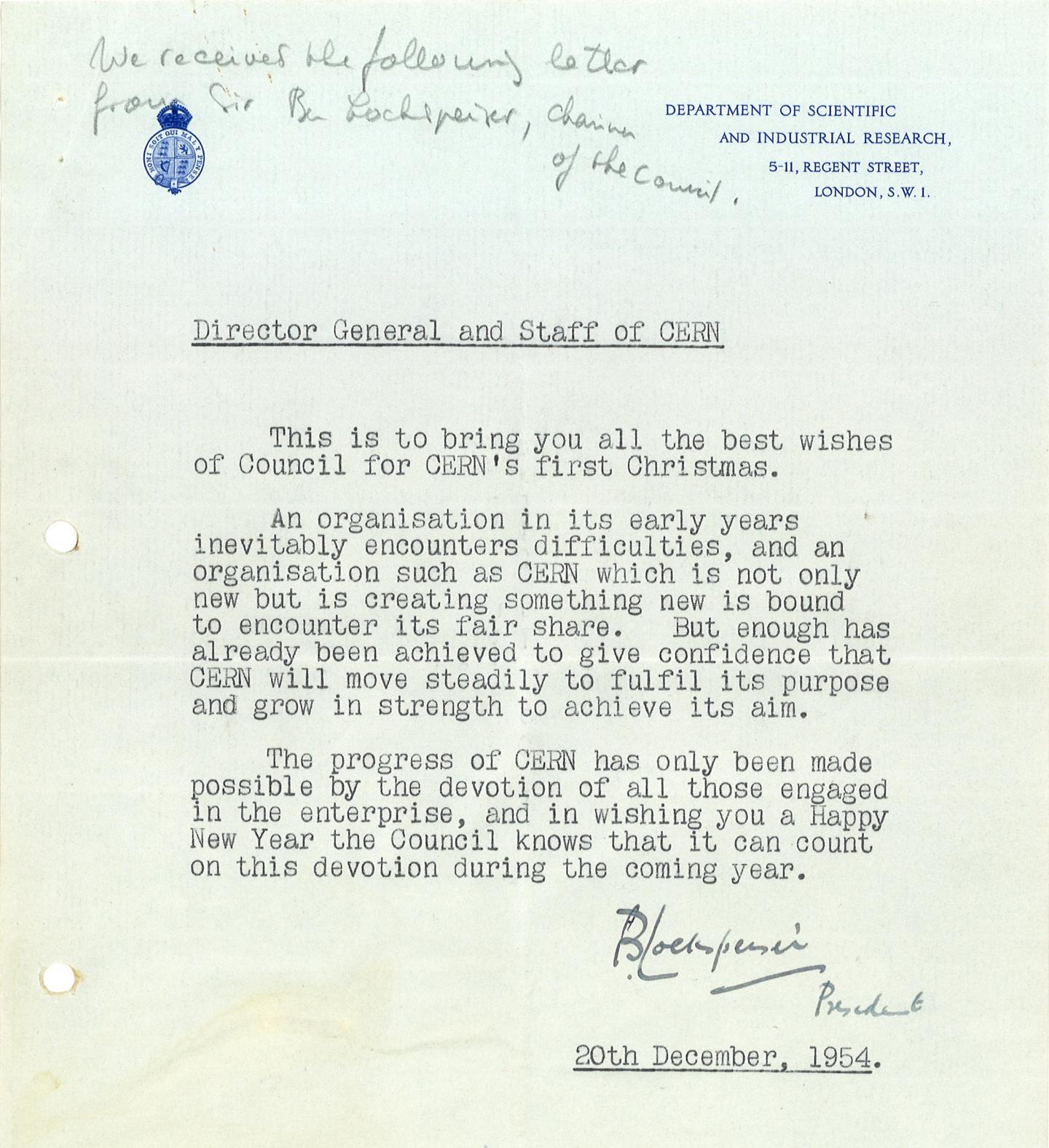
|
December 1954 – Baby CERN’s first Christmas | In his seasonal greetings to CERN’s Director-General and staff, the President of the CERN Council acknowledged the difficulties faced by a young organization and the devotion shown by all those involved in overcoming them. The reply, sent a few days later, emphasized how much had been achieved: “…Less than three months after its official birth, CERN finds itself in possession of an active programme of research and building in full progress, adequate accommodation and a considerable staff. The stage of teething troubles is behind us; our approaching adolescence will bring difficulties of its own but we can look ahead with confidence…” |
|
| ... 59 years ago | 
|
November 1955 – Does CERN need to buy a computer? | When CERN was just over a year old, the Scientific Policy Committee was asked its opinion “as to the advisability of purchasing [an] electronic computer”. Lew Kowarski thought we should buy one, and his proposal (CERN/SPC/13) makes fascinating reading. He gives an overview of the current state of the market and outlines some issues to be considered. These included costs and staffing requirements, but also the fact that physicists were unlikely to bother learning to use this new machine unless it was clear that the effort was worthwhile! He considered the pros and cons of hiring a computer or collaborating with other institutes, but felt that purchase would serve us better “if an electronic computation is to become a standard technique in high-energy physics”. His recommendation was accepted, and the Ferranti Mercury computer was installed in June 1958 (see photo). |
|
| ...60 years ago | 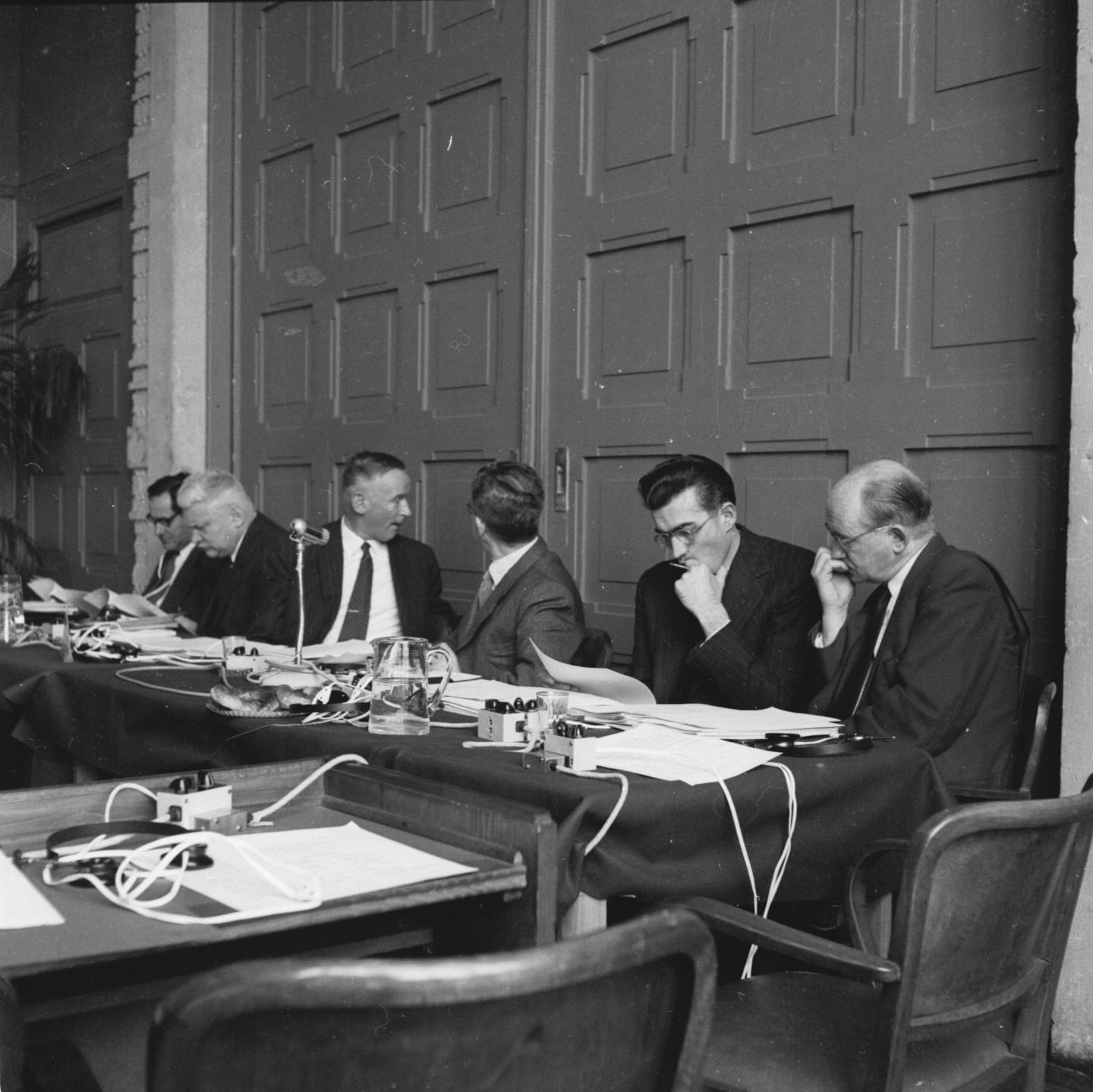
|
October 1954 – the new CERN Council | When the CERN Convention was signed in 1953, it was assumed that the long-awaited European laboratory would soon become a reality. But ratification formalities took longer than expected. Meanwhile work on the ground was forging ahead, so it was a relief for the interim governors when the new CERN Council finally took office some 15 months later. An important item at the first Council meeting on 7-8 October 1954 was the transfer of all assets and liabilities of the interim organization. Council officers and senior CERN staff were also appointed, various procedural, financial and staff questions settled, and a provisional organizational structure adopted. This structure was approved at the second meeting in February 1955 (shown in photo) along with the headquarters agreement with Switzerland. CERN was finally starting to take shape! If you’re interested to know more, the minutes of the first meeting are available here. |
|
| ...60 years ago | 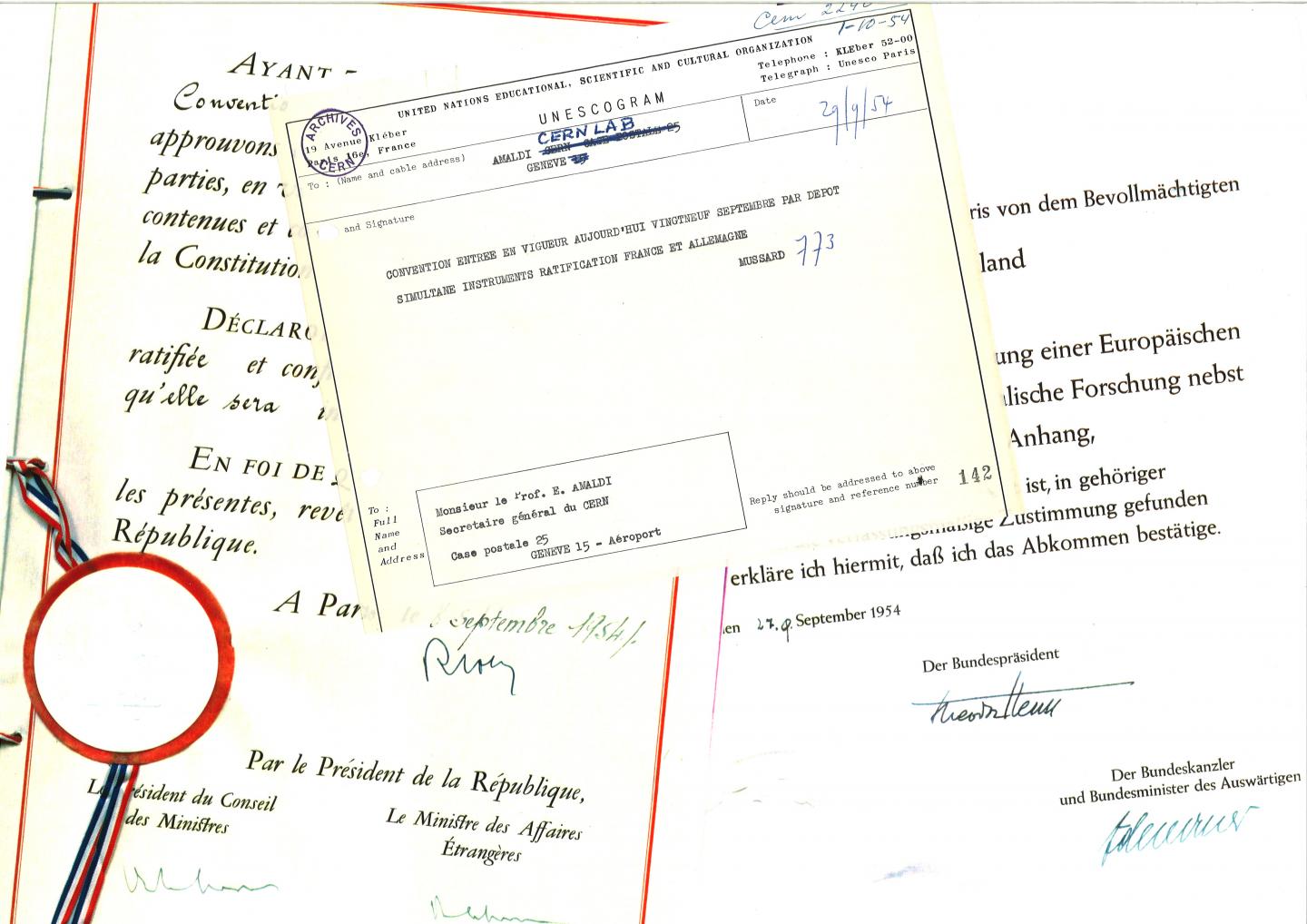
|
September 1954 – CERN exists! | A telegram from Jean Mussard informed Edoardo Amaldi (Secretary-General of the provisional CERN) that the CERN Convention had finally come into force on 29 September, when France and Germany deposited their instruments of ratification at UNESCO House in Paris. Three more member states were yet to ratify – this took another five months – but the necessary conditions had now been met. The provisional Council ceased to exist and, after a few days during which Amaldi was the sole owner of all CERN’s assets, the new organization held its first meeting in Geneva on the 7-8 October 1954. |
|
| ...31 years ago | 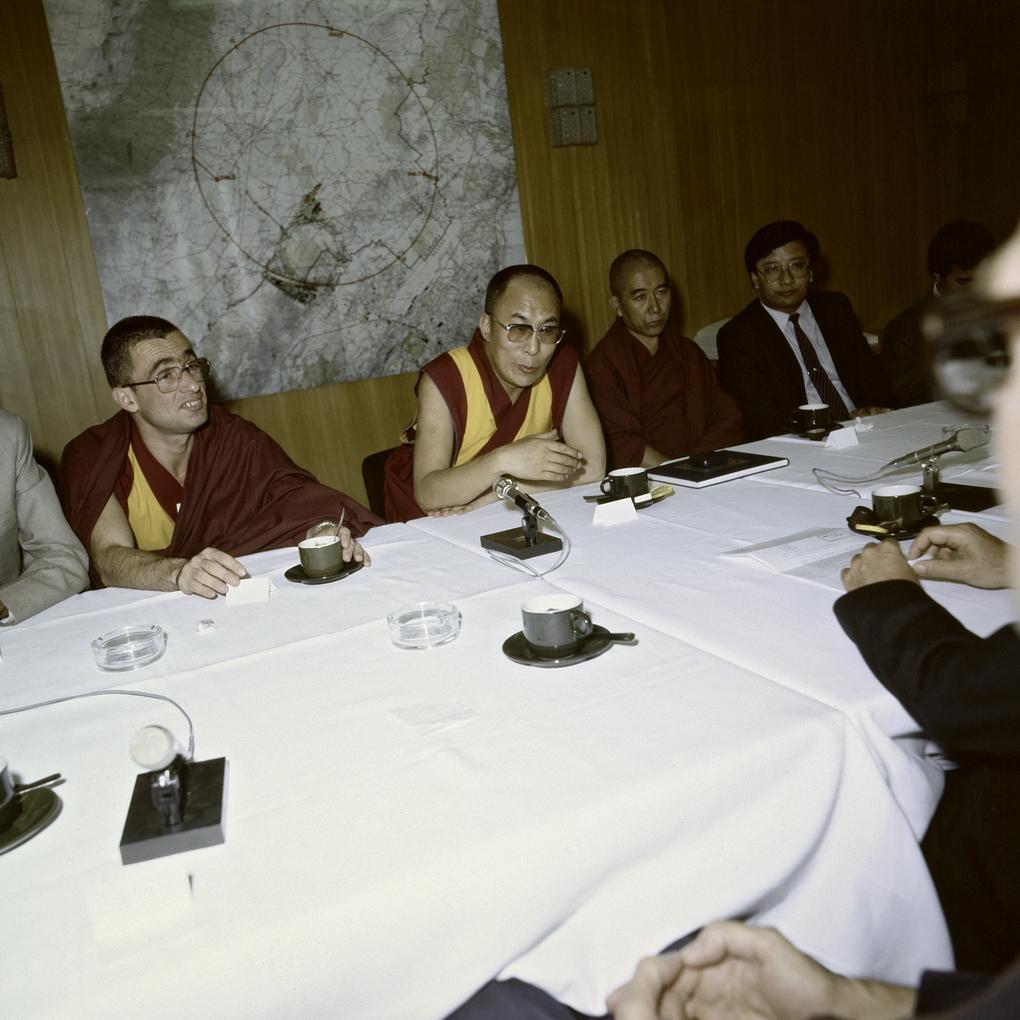
|
August 1983 – His Holiness the Dalai Lama visits CERN | CERN is a centre for scientific research, but also a place for exchanges between science and other fields of human culture and understanding. The visit of His Holiness the Dalai Lama on 30 August 1983 provided just such an opportunity. In the morning he and his delegation of monks toured some of CERN’s facilities, including UA1, where the recent discovery of the W and Z bosons had taken place. After joining the visitors for lunch, some of CERN’s physicists gave short presentations on various aspects of CERN’s work, and a discussion explored the different viewpoints of Buddhists and physicists on a range of topics of mutual interest. |
|
| ...51 years ago | 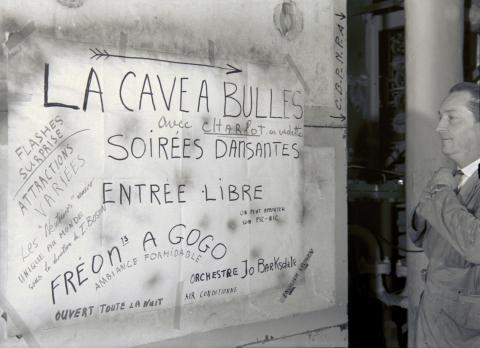
|
May 1963 – The lighter side of neutrino experiments | A buzz of excitement marked the start of neutrino experiments at CERN in 1963. As many years of hard work were about to be put to the test, this spoof advertisement appeared on the concrete shielding near the heavy liquid bubble chamber. CERN inventions such as the fast ejection system, proposed in 1959 by Berend Kuiper and Günther Plass, and the magnetic horn, which earned Simon van der Meer his share of the Nobel prize for physics in 1984, had enabled CERN to produce the most intense beam of neutrinos in the world. The first run in June was anxiously awaited, but everything ran smoothly. During seven weeks a total of 4000 events were observed in the spark chamber and 360 in the bubble chamber, comparing very favourably with the 56 spark chamber events found in the previous neutrino experiment in Brookhaven |
|
| ...50 years ago | 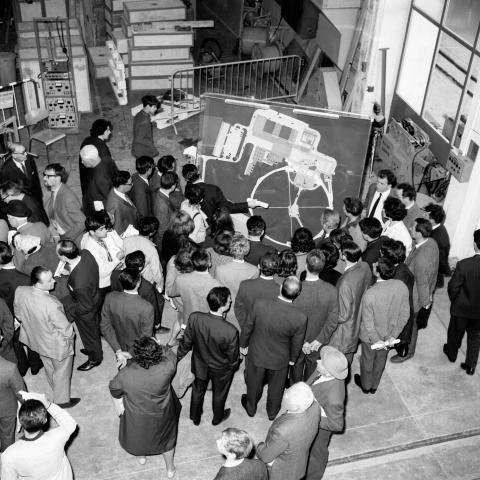
|
April 1964 – CERN Open Day! | If you were one of the estimated 70,000 visitors to CERN during the 2013 Open Days – or one of the 2,000+ volunteers busily organizing visits, games and all manner of weird and wonderful activities – you might not recognize this photo! Fifty years ago CERN’s Open Days were conducted on a much more modest scale. Limited to families and guests of staff, CERN’s third Open Day on 25 April 1964 welcomed 1,100 visitors. Various CERN departments displayed their laboratories and equipment, and a kindergarten looked after the youngest visitors while their parents toured the site. A technical press day was also arranged on 19 May, with 36 visiting journalists. CERN’s Public Information Office reported good coverage of CERN’s activities during the year, despite “the general disinterest of the daily press in basic science”. |
|
| ...55 years ago | 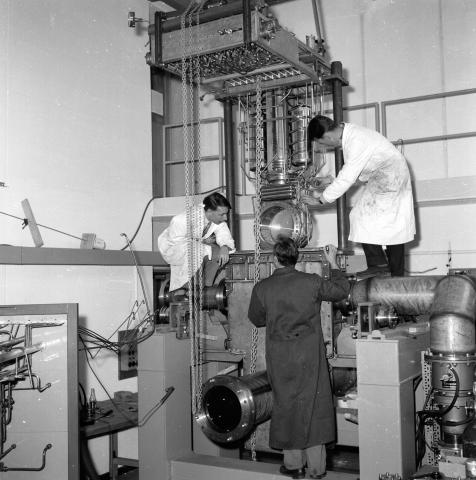
|
March 1959 – preparing CERN’s HBC30 bubble chamber for testing | The 30cm liquid hydrogen bubble chamber (HBC30) - here seen being inserted into its vacuum tank in March 1959 - was the first bubble chamber to be used for physics experiments at CERN. After testing with nitrogen and hydrogen it was placed in the Synchro-Cyclotron, and its first five days of operation in November yielded 100,000 photographs. In March 1960 it was moved to the proton Synchrotron, and by the time it ceased operations in spring 1962 it had consumed 150 km of film. Bubble chambers were one of the main experimental tools used in high-energy physics during the 1950s and 1960s. They were filled with superheated liquid, and if a charged high-energy particle passed through the liquid started to boil along its path, producing a trail of tiny bubbles that could be photographed. CERN’s first bubble chamber was a small (10cm) trial model, developed to test this exciting new technique. Larger models soon followed, including the giantess Gargamelle and the Big European Bubble Chamber (BEBC). |
|
| ...61 years ago | 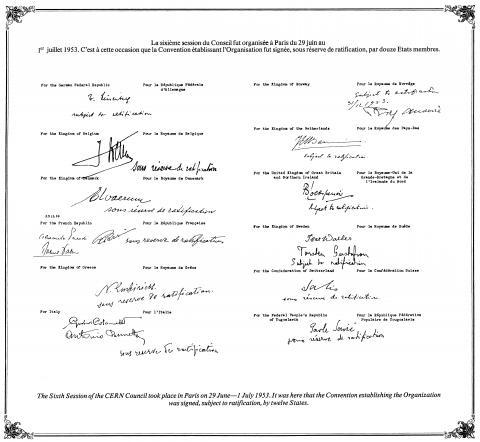
|
July 1953 – Signing the CERN Convention | After long months of negotiation - success! The work of the provisional Council responsible for planning the new international laboratory for nuclear physics reached a successful conclusion on 1 July 1953 with the signature of the CERN Convention. The drafting committee and the administrative and financial working group had worked at UNESCO House throughout the week leading up the Council’s sixth meeting in Paris (29-30 June) to finalize the document, and signature took place the next day at a conference held at the Ministry of Foreign Affairs. Delegates of nine countries signed, with the remaining three expressing their intention to do so shortly. The convention was gradually ratified by the 12 founding member states (Belgium, Denmark, France, the Federal Republic of Germany, Greece, Italy, the Netherlands, Norway, Sweden, Switzerland, the United Kingdom, and Yugoslavia) and the European Organization for Nuclear Research officially came into being on 29 September 1954. The text of the Convention is available here. |
